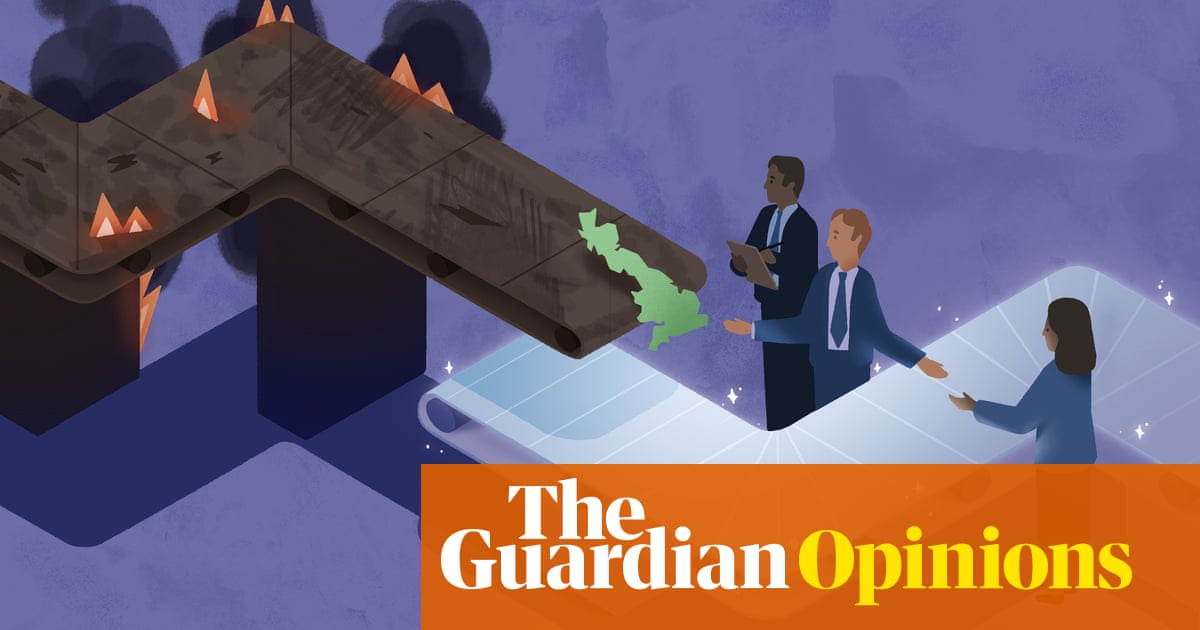
Ihave found it almost impossible to look away from the images of the carnage unleashed by Russian troops on occupied Ukrainian towns. Overcome with numbness, I masochistically zoom in on the photos of victims, studying every face, or whatever is left of it. All I can think is: “They have done this before. They are doing it again.”
The indiscriminate shelling, the looting, the evidence of rape, torture and executions, and, above all, the sense of enthusiasm with which these war crimes are being carried out are painfully familiar. In recent days, my mind has kept wandering to another photo, taken 18 years ago in Rigakhoy village in Chechnya by my mum, human rights activist Natalya Estemirova. It shows the corpses of five tiny, grey-faced children, all siblings, lined up according to height. The oldest is five years old, the youngest – twins – were not even 12 months old. The children and their mother, Maydat Tsintsayeva, were killed in a deliberate bombing by the Russians on 9 April 2004.
This was one of the many unprosecuted crimes committed by the Russian army in the name of “counter-terrorism” in Chechnya. My mum hoped that these photos would alert the world to what Chechen civilians were going through, but it was to no avail. Years later it was her turn – as someone took a grainy photo of her lifeless, bullet-ridden body lying on the side of the road in the sunburned grass. Her murderers walk free. That is Russia’s legacy in Chechnya.
The two wars that Russia fought against Chechnya between 1994 and 1996, and 1999 and 2009, devastated the republic and left approximately 300,000 dead and between 3,000 and 5,000 people disappeared. Chechnya today serves as a grotesque miniature of what Vladimir Putin wants to achieve in Ukraine: a declawed, subdued place with its population broken and terrorised into submission by the brutality of its regime-friendly leadership. Ramzan Kadyrov, Putin’s “little dragon”, as the late journalist Anna Politkovskaya termed him, continues to do the Kremlin’s bidding, menacing his own people and sending his men to fight in Ukraine. He is also suspected of being behind multiple killings of opponents of his regime.
Before the bombing of the Mariupol maternity hospital, there was the bombing of Grozny maternity hospital, and a crowded market, which killed an estimated 100-120 people in 1999. Before Bucha and Irpin, there was Samashki, where on 7 April 1995, Russian troops carried out zachistka – a “clean-up” operation that unleashed unspeakable horrors on innocent people. Soldiers shot civilians, raped women, and set homes on fire. At least 103 were murdered on that day. And the list goes on: Novye Aldi, Katyr Yurt, Komsomolskoye – too many massacres, too many broken lives to count.
This begs the question: with all of these well-documented atrocities committed by Russia, how was this allowed to happen yet again? Russia’s modus operandi in Chechnya served as something of a blueprint for the next two decades of the Kremlin’s military and political strategy, a macabre methodology for breaking the will of restive populations in pursuit of its imperial interests. In the years since, we have seen – from Tskhinval to Aleppo, from Crimea to Central African Republic – a willingness to deploy violence with impunity across the world stage.
While activists such as my mother risked their lives to collect evidence of war crimes in Chechnya, pragmatic western leaders brushed them off, welcoming the influx of Russian oil, gas and money. Despite some expressions of sympathy, the issue was largely dismissed as being the “internal affairs” of the Russian state.
Inside Russia, Kremlin propagandists successfully spun myths about the “genocide of Russians” in Chechnya and leveraged the global “war on terror” to dehumanise Chechens and make crimes against civilians appear justifiable. Similar propaganda tactics are now being used to paint Ukrainians as “neo-Nazis” or “Banderovites”.
After the invasion of Ukraine began, many Muscovite liberals spoke of how they didn’t know how to live with themselves – although most of them seemed to have lived comfortably with their government’s actions as it butchered and terrorised its own (Muslim) population since 1994. We didn’t see such self-reflection while Russian bombs were raining down on Syrian cities, either.
It’s baffling that so many are shocked by Putin’s current conduct when he has showcased his authoritarian tendencies from the start. It’s even more baffling that Russia was let off with a slap on the wrist after its illegal annexation of Crimea and allowed to host the PR coup that was the 2018 World Cup, while waging war in Donbas. Atrocities that are being committed in Ukraine by Russia are the culmination of unchecked aggression and violence that was enabled or ignored for decades.
This war must only end in one way: with Ukraine’s victory. Recent rocket attacks in Kramatorsk that killed dozens of civilians who were trying to evacuate is another example of how any talk of truce coming from the Russian side is a decoy. The west must go above and beyond to help Ukraine by giving it whatever its government asks for – tanks, artillery, aircraft, sanctions. It would simply be compensation for years of indifference.
As a Chechen, I am tied to the Ukrainian people through a bloody bond. A victory for them would be a victory for every victim of Putin’s regime.
Lana Estemirova is the host of Trouble with the Truth podcast and is currently working on her first book












